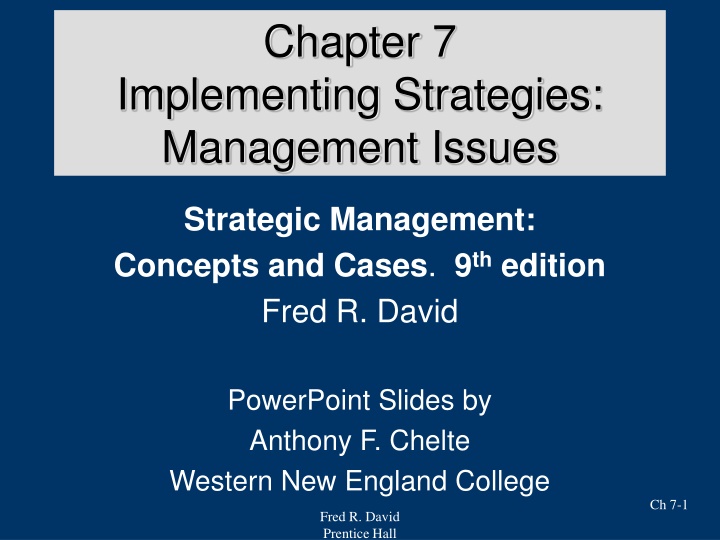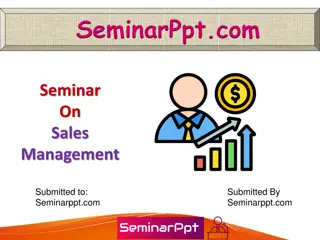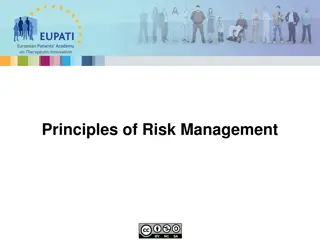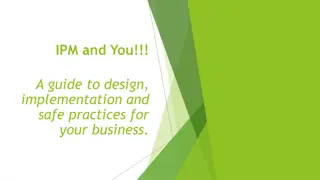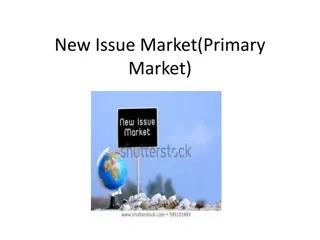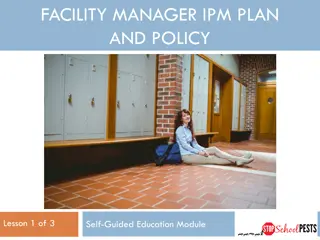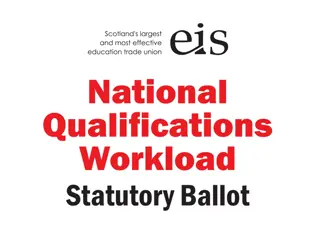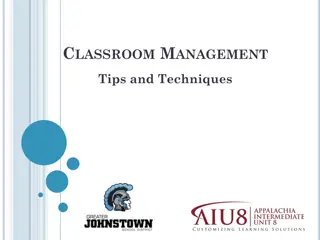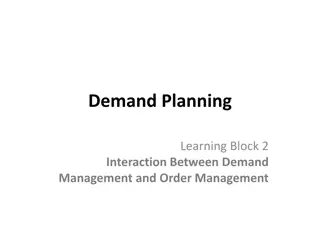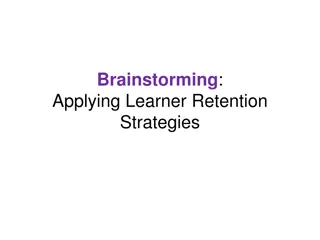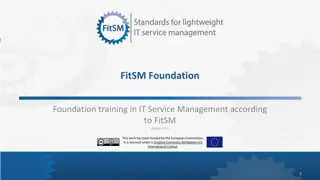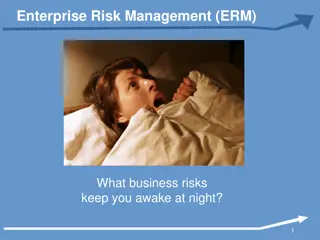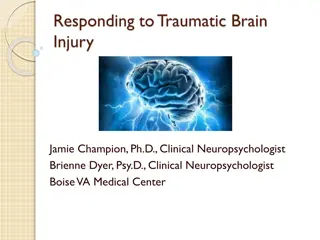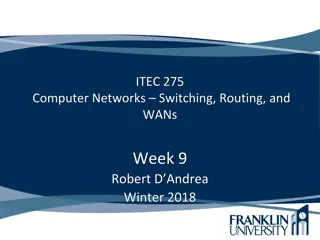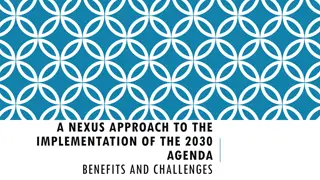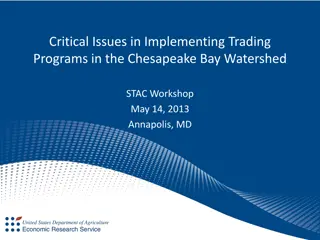Implementing Strategies: Management Issues Overview
This overview discusses the key aspects of implementing strategies, including the nature of strategy implementation, managing conflict, linking performance to strategies, managing resistance to change, production/operations concerns, human resource concerns, and more. It emphasizes the importance of effectively managing forces during the action phase of strategy implementation.
Download Presentation

Please find below an Image/Link to download the presentation.
The content on the website is provided AS IS for your information and personal use only. It may not be sold, licensed, or shared on other websites without obtaining consent from the author.If you encounter any issues during the download, it is possible that the publisher has removed the file from their server.
You are allowed to download the files provided on this website for personal or commercial use, subject to the condition that they are used lawfully. All files are the property of their respective owners.
The content on the website is provided AS IS for your information and personal use only. It may not be sold, licensed, or shared on other websites without obtaining consent from the author.
E N D
Presentation Transcript
Chapter 7 Implementing Strategies: Management Issues Strategic Management: Concepts and Cases. 9th edition Fred R. David PowerPoint Slides by Anthony F. Chelte Western New England College Ch 7-1 Fred R. David Prentice Hall
Chapter Outline The nature of Strategy Implementation Annual Objectives Policies Resource Allocation Ch 7-2 Fred R. David Prentice Hall
Chapter Outline Managing Conflict Matching Structure with Strategy Restructuring, Reengineering, and E- Engineering Linking Performance and Pay to Strategies Ch 7-3 Fred R. David Prentice Hall
Chapter Outline Managing Resistance to Change Managing the Natural Environment Creating a Strategy-Supportive Culture Ch 7-4 Fred R. David Prentice Hall
Chapter Outline Production/Operations Concerns When Implementing Strategies Human Resource Concerns When Implementing Strategies Ch 7-5 Fred R. David Prentice Hall
Implementing Strategies: Management Issues Pretend that every single person you meet has a sign around his or her neck that says, Make me feel important. -- Mary Kay Ash, CEO of Mary Kay, Inc. Ch 7-6 Fred R. David Prentice Hall
Implementing Strategies: Strategy Analysis & Choice Management Issues Contrasting strategy formulation and strategy implementation Formulation is positioning forces before the action Implementation is managing forces during the action Ch 7-7 Fred R. David Prentice Hall
Implementing Strategies: Strategy Analysis & Choice Management Issues Contrasting strategy formulation and strategy implementation Formulation focuses on effectiveness Implementation focuses on efficiency Ch 7-8 Fred R. David Prentice Hall
Implementing Strategies: Strategy Analysis & Choice Management Issues Contrasting strategy formulation and strategy implementation Formulation is primarily an intellectual process Implementation is primarily an operational process Ch 7-9 Fred R. David Prentice Hall
Implementing Strategies: Strategy Analysis & Choice Management Issues Contrasting strategy formulation and strategy implementation Formulation requires good intuitive and analytical skills Implementation requires special motivation and leadership skills Ch 7-10 Fred R. David Prentice Hall
Implementing Strategies: Strategy Analysis & Choice Management Issues Contrasting strategy formulation and strategy implementation Formulation requires coordination among a few individuals Implementation requires coordination among many persons Ch 7-11 Fred R. David Prentice Hall
Implementing Strategies: Strategy Analysis & Choice Management Issues Strategy implementation Varies among different types and sizes of organizations Ch 7-12 Fred R. David Prentice Hall
Implementing Strategies: Strategy Analysis & Choice Management Issues Strategy implementation Actions Altering sales territories Adding new departments Closing facilities Hiring new employees Cost-control procedures Changing advertising strategies Building new facilities Ch 7-13 Fred R. David Prentice Hall
Management Perspectives Formulation to Implementation transition Shift in responsibility From strategists to division and functional managers Ch 7-14 Fred R. David Prentice Hall
Management Issues Annual Objectives Policies Resources Management Issues Organizational structure Restructuring Rewards/Incentives Ch 7-15 Fred R. David Prentice Hall
Management Issues (continued) Resistance to Change Managers & strategy Supportive culture Management Issues Production/operations Human resources Downsizing Ch 7-16 Fred R. David Prentice Hall
Annual Objectives Decentralized activity Involves all managers in the firm Ch 7-17 Fred R. David Prentice Hall
Annual Objectives 1. Basis for allocating resources 2. Primary mechanism for evaluating managers 3. Major instrument for monitoring progress toward long-term objectives 4. Establish organizational, divisional, and departmental priorities Ch 7-18 Fred R. David Prentice Hall
Annual Objectives Horizontal consistency of objectives Vertical consistency of objectives Ch 7-19 Fred R. David Prentice Hall
Annual Objectives Objectives should state Quantity Quality Cost Time Ch 7-20 Fred R. David Prentice Hall
Policies Policies facilitate solving recurring problems and guide the implementation of strategy Ch 7-21 Fred R. David Prentice Hall
Policies Policies set Boundaries Constraints limits Ch 7-22 Fred R. David Prentice Hall
Policies Example Issues requiring management policy -- To offer extensive or limited management development workshops and seminars To centralize or decentralize employee-training activities To recruit through employment agencies, college campuses, and/or newspapers To promote from within or hire from the outside To establish a high- or low-safety stock of inventory To buy lease, or rent new production equipment Ch 7-23 Fred R. David Prentice Hall
Resource Allocation Resource Allocation A central management activity that allows for strategy execution Ch 7-24 Fred R. David Prentice Hall
Resource Allocation Four types of resources 1. Financial resources 2. Physical resources 3. Human resources 4. Technological resources Ch 7-25 Fred R. David Prentice Hall
Managing Conflict Conflict Disagreement between two or more parties on one or more issues Ch 7-26 Fred R. David Prentice Hall
Managing Conflict Conflict is not always bad Absence of conflict Signal indifference or apathy Can energize opposing groups to action May help managers identify problems Ch 7-27 Fred R. David Prentice Hall
Managing Conflict Conflict Management and Resolution Avoidance Defusion Confrontation Ch 7-28 Fred R. David Prentice Hall
Matching Structure with Strategy Changes in Strategy Changes in Structure 1. Structure largely dictates how objectives and policies will be established. 2. Structure dictates how resources will be allocated Ch 7-29 Fred R. David Prentice Hall
Chandlers Strategy-Structure Relationship Organizational performance declines New strategy Is formulated New administrative problems emerge Organizational performance improves New organizational structure is established Ch 7-30 Fred R. David Prentice Hall
Basic Forms of Structure 1. Functional Structure Groups tasks and activities by business function 2. Divisional Structure Decentralized and organized by geography, product, customer, or process Ch 7-31 Fred R. David Prentice Hall
Basic Forms of Structure 3. Strategic Business Unit Structure (SBU) Groups similar divisions; delegates authority and responsibility to SBU executive 4. Matrix Structure Most complex of all designs. Depends upon both vertical and horizontal flows of authority and communication Ch 7-32 Fred R. David Prentice Hall
Restructuring Restructuring Reducing the size of the firm in terms of number of employees, divisions, or units, and the number of hierarchical levels in the firm s organizational structure Ch 7-33 Fred R. David Prentice Hall
Restructuring Also called Downsizing Rightsizing Delayering Ch 7-34 Fred R. David Prentice Hall
Restructuring Employed when ratios out of line with benchmarked competitors Primary benefit sought is cost reduction Ch 7-35 Fred R. David Prentice Hall
Reengineering Reengineering Involves reconfiguring or redesigning work, jobs, and processes to improve cost, quality, service and speed. Ch 7-36 Fred R. David Prentice Hall
Reengineering Also called Process management Process innovation Process redesign Ch 7-37 Fred R. David Prentice Hall
Reengineering Reengineering Concerned more with employee and customer well-being than shareholder well-being Ch 7-38 Fred R. David Prentice Hall
Linking Performance and Pay to Strategies Most companies practicing pay-for- performance Ch 7-39 Fred R. David Prentice Hall
Linking Performance and Pay to Strategies Dual bonus system becoming more common Based on both annual objectives and long-term objectives Profit Sharing Incentive compensation used by 30% of companies Gain Sharing Performance targets set for employees or departments Ch 7-40 Fred R. David Prentice Hall
Tests for Performance-Pay Plans Does the plan capture attention? Do employees understand the plan? Is the plan improving communication? Does the plan pay out when it should? Is the company or unit performing better? Ch 7-41 Fred R. David Prentice Hall
Managing Resistance to Change Change raises anxiety over fear of: Economic loss Inconvenience Uncertainty Break in status-quo Ch 7-42 Fred R. David Prentice Hall
Managing Resistance to Change Resistance to change Single greatest threat to successful strategy implementation Ch 7-43 Fred R. David Prentice Hall
Change Strategies 1. Force Change Strategy 2. Educative Change Strategy 3. Rational or Self-Interest Change Strategy Ch 7-44 Fred R. David Prentice Hall
A force change strategy involves giving orders and enforcing those orders; this strategy has the advantage of being fast, but it is plagued by low commitment and high resistance. The educative change strategy is one that presents information to convince people of the need for change; the disadvantage of an educative change strategy is that implementation becomes slow and difficult. However, this type of strategy evokes greater commitment and less resistance than does the force change strategy. Ch 7-45 Fred R. David Prentice Hall
Finally, a rational or self-interest change strategy is one that attempts to convince Individuals that the change is to their personal advantage. When this appeal is successful, strategy implementation can be relatively easy. However, implementation changes are seldom to everyone s advantage. Ch 7-46 Fred R. David Prentice Hall
Managing the Natural Environment Wide appreciation for firms that conduct operations that mend rather than harm the environment. Ch 7-47 Fred R. David Prentice Hall
Creating a Strategy-Supportive Culture Strategists should strive to preserve, emphasize, and build upon aspects of existing culture that support new strategies. Ch 7-48 Fred R. David Prentice Hall
Creating a Strategy-Supportive Culture Elements linking culture to strategy: 1. Formal statements of philosophy, charters, etc. used for recruitment and selection, and socialization Designing of physical spaces, facades, buildings Deliberate role modeling, teaching and coaching Explicit reward and status system, promotion criteria Stories, legends, myths about key people and events What leaders pay attention to, measure and control Leader reactions to critical incidents and crises How the organization is designed and structured Organizational systems and procedures Criteria used for recruitment, selection, promotion, retirement 2. 3. 4. 5. 6. 7. 8. 9. 10. Ch 7-49 Fred R. David Prentice Hall
Production/Operations Concerns Production processes typically constitute more than 70% of firm s total assets Decisions on: Plant size Inventory/inventory control Quality control Cost control Technological innovation Ch 7-50 Fred R. David Prentice Hall
